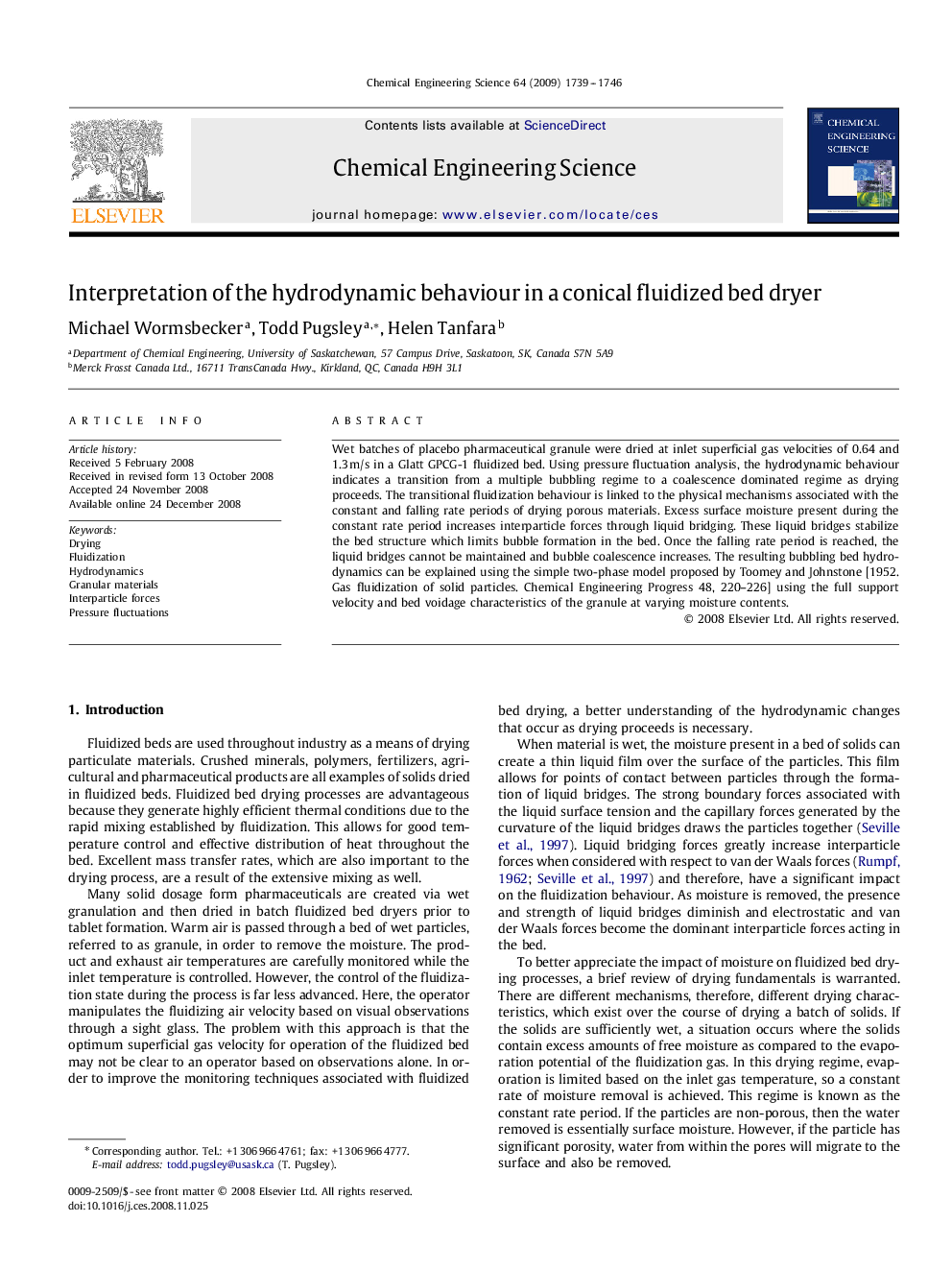| Article ID | Journal | Published Year | Pages | File Type |
|---|---|---|---|---|
| 157476 | Chemical Engineering Science | 2009 | 8 Pages |
Wet batches of placebo pharmaceutical granule were dried at inlet superficial gas velocities of 0.64 and 1.3 m/s in a Glatt GPCG-1 fluidized bed. Using pressure fluctuation analysis, the hydrodynamic behaviour indicates a transition from a multiple bubbling regime to a coalescence dominated regime as drying proceeds. The transitional fluidization behaviour is linked to the physical mechanisms associated with the constant and falling rate periods of drying porous materials. Excess surface moisture present during the constant rate period increases interparticle forces through liquid bridging. These liquid bridges stabilize the bed structure which limits bubble formation in the bed. Once the falling rate period is reached, the liquid bridges cannot be maintained and bubble coalescence increases. The resulting bubbling bed hydrodynamics can be explained using the simple two-phase model proposed by Toomey and Johnstone [1952. Gas fluidization of solid particles. Chemical Engineering Progress 48, 220–226] using the full support velocity and bed voidage characteristics of the granule at varying moisture contents.
